Art Nouveau in Vienna
Exploring the streets of Vienna, one can’t help but be enchanted by the enchanting Art Nouveau façade of the Majolikahaus, a testament to the city’s rich artistic heritage.
This architectural gem is just one of many examples of how Vienna embraced the Art Nouveau movement with open arms.
As visitors wander through the city’s picturesque neighborhoods, they’ll encounter a treasure trove of Art Nouveau wonders waiting to be discovered.
This paragraph sets the stage for a fascinating journey through Vienna’s Art Nouveau scene, where every corner holds a new surprise for those eager to uncover its secrets.
Key Points
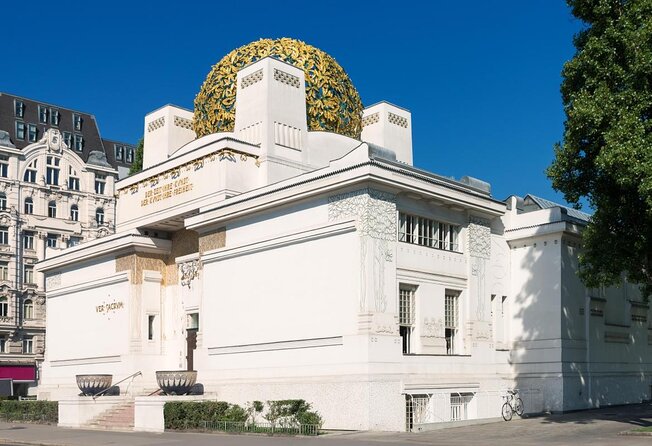
- Vienna boasts intricate Art Nouveau architecture reflecting a fusion of tradition and modernity.
- Key artists like Klimt, Moser, Hoffmann, and Wagner contributed significantly to the movement.
- Art Nouveau revolutionized design with organic motifs, inspiring subsequent artistic movements.
- Preservation efforts, museums, and educational programs ensure the legacy and appreciation of Art Nouveau in Vienna.
Vienna’s Art Nouveau Influence
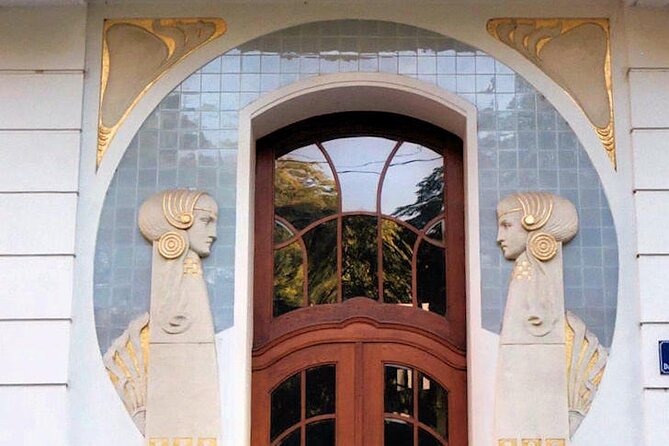
Vienna’s Art Nouveau movement captivated the city with its intricate designs and fusion of tradition and modernity, leaving a lasting impact on the cultural landscape of the late 19th century. The city’s artistic evolution during this period was remarkable, as Art Nouveau emphasized craftsmanship and nature-inspired motifs, breaking away from conventional styles.
This shift had a profound cultural impact, shaping Vienna’s architecture, interior design, and visual arts scene. The unique blend of tradition and modernity in Art Nouveau creations reflected the city’s rich artistic heritage. Artists like Gustav Klimt, Koloman Moser, Josef Hoffmann, Otto Wagner, and Egon Schiele played pivotal roles in this movement, contributing to Vienna’s status as a hub of artistic innovation and creativity.
The legacy of Art Nouveau continues to inspire contemporary artists, demonstrating its enduring influence on design.
Architectural Marvels of Vienna
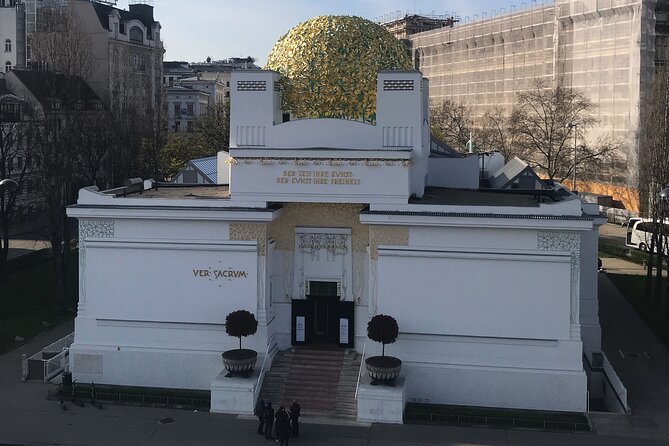
The architectural marvels of Vienna stand as testaments to the city’s rich artistic heritage and innovative design contributions. Vienna’s Art Nouveau buildings, such as the Secession Building and Kirche am Steinhof, showcase the city’s cultural and artistic richness during this period. These structures are characterized by intricate decorations and curved lines, reflecting a unique blend of tradition and modernity.
The Secession Building, designed by Joseph Maria Olbrich, is a prime example of the Art Nouveau style with its ornate facade and distinctive golden dome. Kirche am Steinhof, a church designed by Otto Wagner, exemplifies the innovative architectural approach of the time, combining artistic elements with functional design principles.
- Secession Building
- Kirche am Steinhof
- Ornate decorations and curved lines
- Blend of tradition and modernity
- Innovative architectural designs
Prominent Artists in Vienna
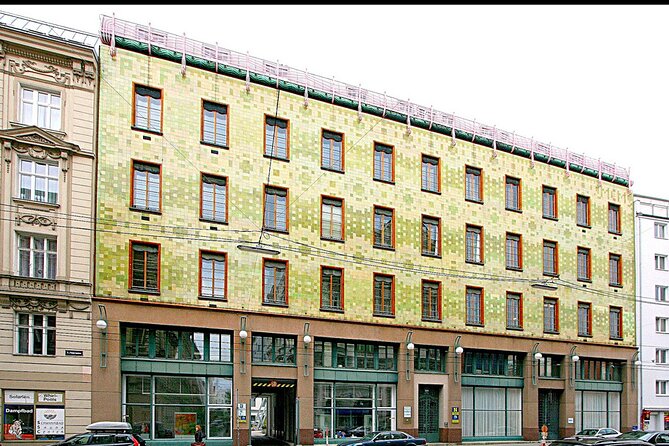
Renowned for their impactful contributions to the Art Nouveau movement, several prominent artists in Vienna left a lasting mark on the art world through their innovative and distinctive creations. Gustav Klimt, known for his golden phase paintings, captivated audiences with his intricate and emotionally charged works. Koloman Moser’s influence extended across various art forms, showcasing his versatility as an artist and designer. Josef Hoffmann co-founded the Vienna Secession movement, pushing boundaries with his avant-garde approach. Otto Wagner’s architectural designs redefined the cityscape, blending functionality with artistic flair. Egon Schiele’s raw and expressive artworks challenged societal norms, leaving a profound impact on the Viennese art scene.
| Artist | Contribution |
|---|---|
| Gustav Klimt | Known for his golden phase paintings and masterpieces. |
| Koloman Moser | Influential artist and designer, leaving a lasting impact on various art forms. |
| Josef Hoffmann | Co-founder of the Vienna Secession movement, pushing artistic boundaries. |
| Otto Wagner | Prominent architect with innovative and groundbreaking designs. |
| Egon Schiele | Renowned for his raw and expressive artworks, challenging traditional norms in art. |
Design Legacy of Art Nouveau
Moving from the impactful contributions of Vienna’s prominent artists, the design legacy of Art Nouveau revolutionized artistic aesthetics with its organic forms and motifs, paving the way for future design movements. This evolution in design left a lasting impact on the artistic world, shaping the way for innovative approaches and styles. Key aspects of the design legacy include:
- Incorporation of intricate organic motifs into various art forms
- Fusion of nature-inspired elements with modern design principles
- Influence on design evolution, inspiring future movements like Art Deco
- Introduction of a new artistic language through unique forms and structures
- Continuation of Art Nouveau’s influence in contemporary design practices.
Preserving Vienna’s Art Nouveau Heritage
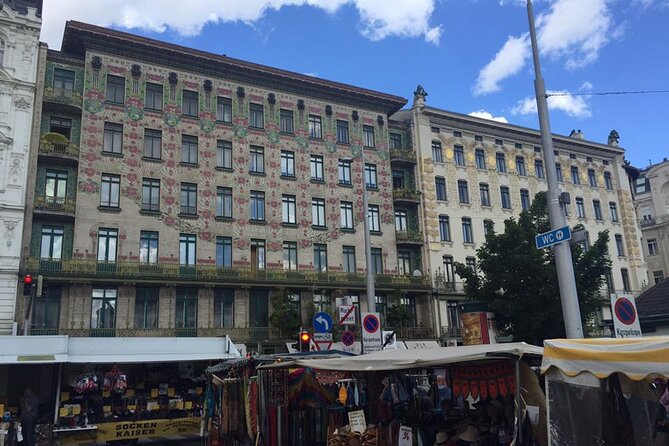
With a focus on preserving Vienna’s Art Nouveau heritage, efforts are underway to conserve the city’s intricate and culturally rich architectural treasures. Conservation efforts play a vital role in safeguarding the cultural significance of these Art Nouveau buildings, ensuring that future generations can appreciate their beauty and historical value.
Through meticulous restoration projects and ongoing maintenance, Vienna aims to protect its architectural legacy that reflects a unique blend of tradition and modernity. Various initiatives, including museums, exhibitions, walking tours, and educational programs, contribute to raising awareness about the importance of Art Nouveau in the city’s cultural landscape.
Common questions
What Were Some of the Challenges Faced by Artists Working in the Art Nouveau Style in Vienna During the Late 19th Century?
Artists working in the late 19th century faced challenges of pushing boundaries while staying true to tradition, balancing innovation with societal expectations, navigating evolving artistic influences, and establishing themselves as innovators within the competitive art world.
How Did the Socio-Political Climate of Vienna at the Time Influence the Development and Acceptance of Art Nouveau Architecture in the City?
Influenced by the socio-political climate, Vienna’s acceptance of Art Nouveau architecture grew due to its innovative designs and ability to reflect cultural richness. The movement’s organic forms and motifs brought a unique blend of tradition and modernity to the cityscape.
Can You Elaborate on Any Lesser-Known Artists or Designers Who Made Significant Contributions to the Art Nouveau Movement in Vienna?
Exploring Vienna’s Innovators in the Art Nouveau Movement reveals hidden gems like Leopold Forstner, a talented designer who crafted unique furniture pieces. Their contributions enriched the movement’s diversity and showcased the depth of artistic talent in Vienna.
What Specific Elements of Viennese Culture and History Were Incorporated Into Art Nouveau Designs in the City?
Incorporating Viennese influence into Art Nouveau elements, the city’s rich history and cultural tapestry inspired intricate designs, organic motifs, and a harmonious blend of tradition with modernity. These artistic expressions continue to captivate and inspire.
How Did the Economic Factors of the Time Impact the Production and Consumption of Art Nouveau Pieces in Vienna?
During that period, economic factors significantly influenced the production and consumption of Art Nouveau pieces in Vienna. The economy’s fluctuations impacted artists’ materials costs, buyers’ purchasing power, and the overall demand for artistic creations.
Last Words
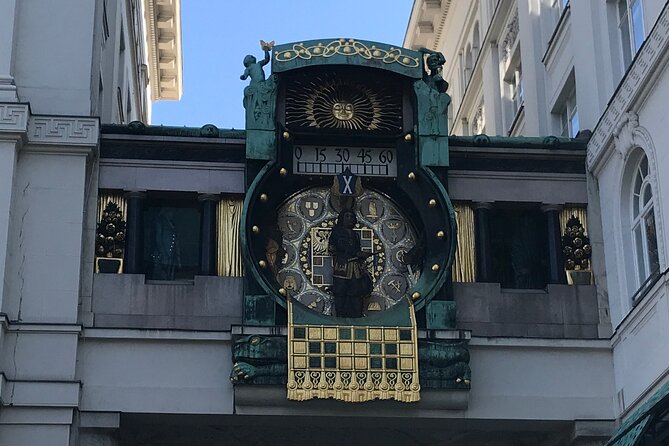
To sum it up, Vienna’s Art Nouveau movement continues to captivate and inspire with its intricate designs, curved lines, and deep connection to nature.
The architectural marvels, iconic buildings, and innovative artworks created by key artists like Gustav Klimt and Josef Hoffmann have left a lasting legacy that still influences contemporary artists and designers today.
Through preservation efforts and educational programs, Vienna’s Art Nouveau heritage remains a vibrant testament to the movement’s enduring impact on the city’s artistic landscape.